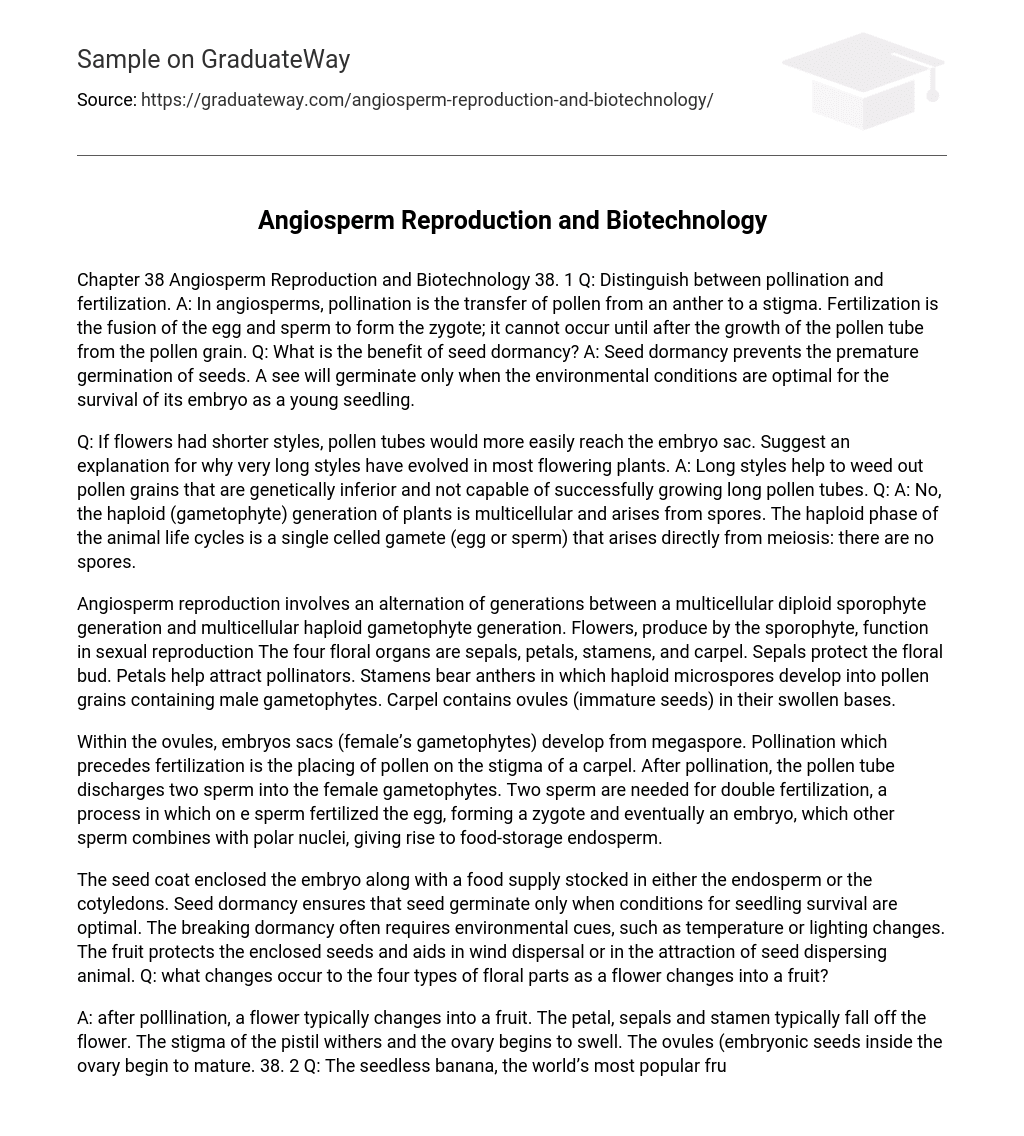Angiosperm reproduction involves an alternation of generations between a multicellular diploid sporophyte generation and multicellular haploid gametophyte generation. Flowers, produce by the sporophyte, function in sexual reproduction The four floral organs are sepals, petals, stamens, and carpel. Sepals protect the floral bud. Petals help attract pollinators. Stamens bear anthers in which haploid microspores develop into pollen grains containing male gametophytes. Carpel contains ovules (immature seeds) in their swollen bases.
Within the ovules, embryos sacs (female’s gametophytes) develop from megaspore. Pollination which precedes fertilization is the placing of pollen on the stigma of a carpel. After pollination, the pollen tube discharges two sperm into the female gametophytes. Two sperm are needed for double fertilization, a process in which on e sperm fertilized the egg, forming a zygote and eventually an embryo, which other sperm combines with polar nuclei, giving rise to food-storage endosperm.
The seed coat enclosed the embryo along with a food supply stocked in either the endosperm or the cotyledons. Seed dormancy ensures that seed germinate only when conditions for seedling survival are optimal. The breaking dormancy often requires environmental cues, such as temperature or lighting changes. The fruit protects the enclosed seeds and aids in wind dispersal or in the attraction of seed dispersing animal.





